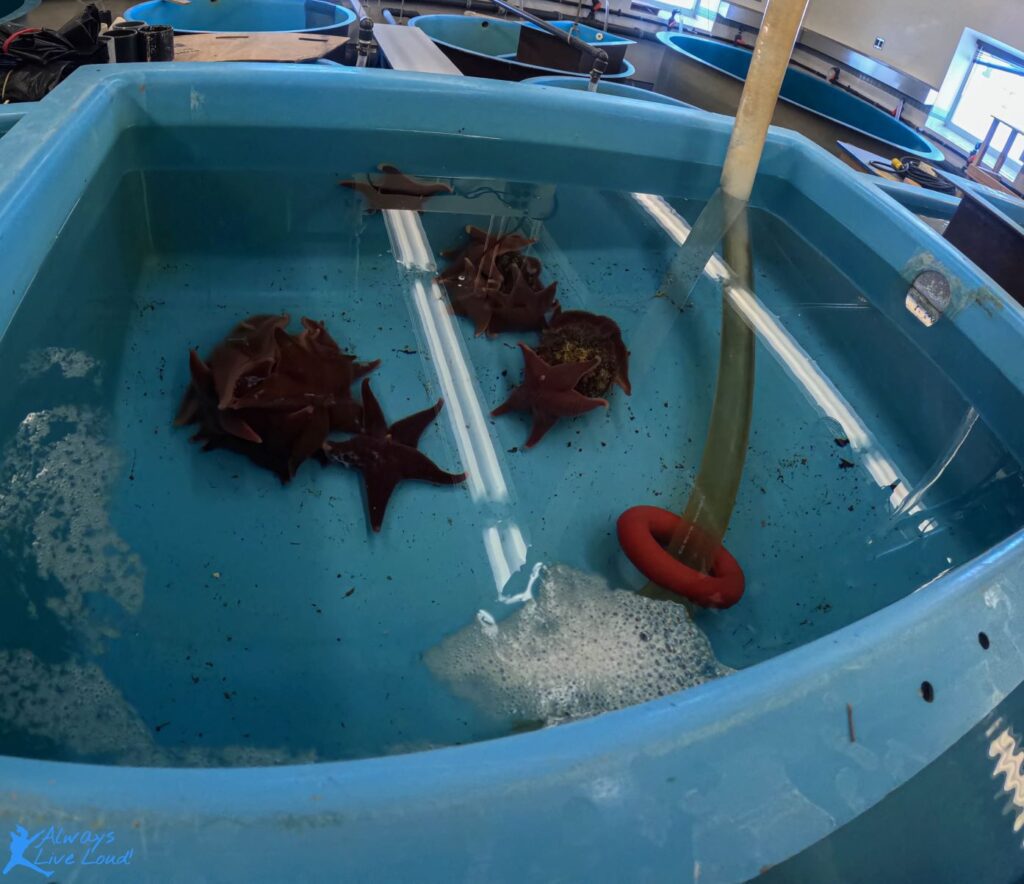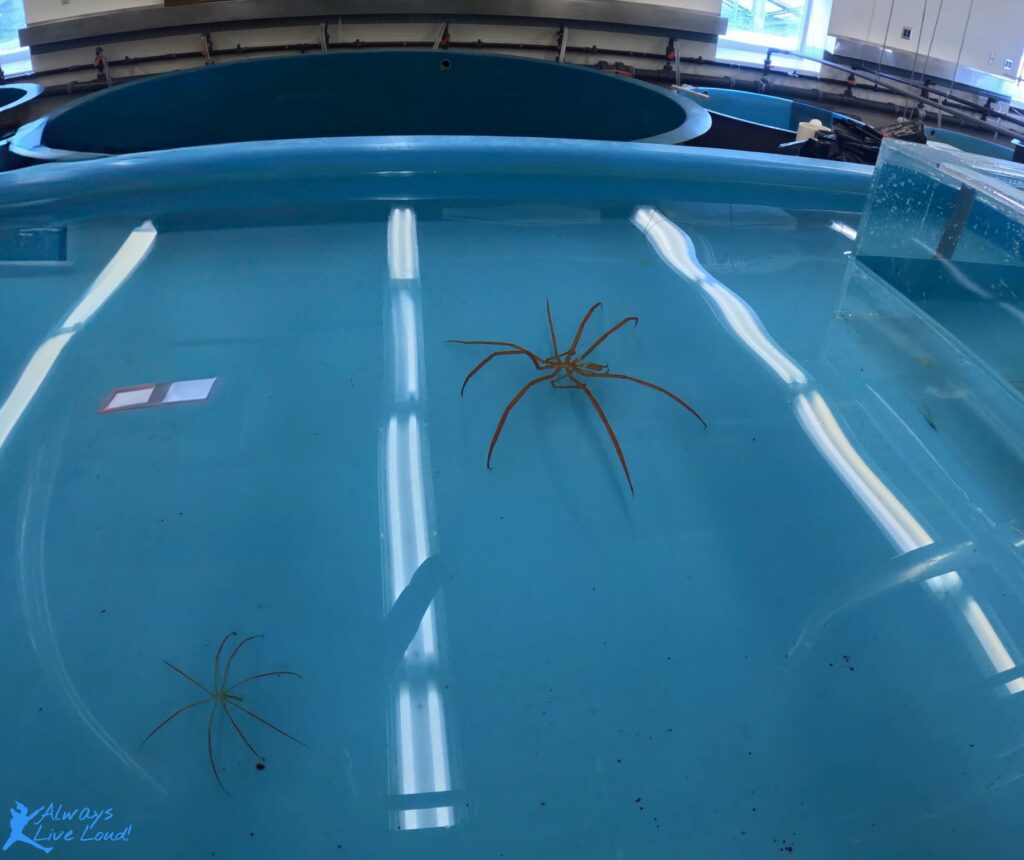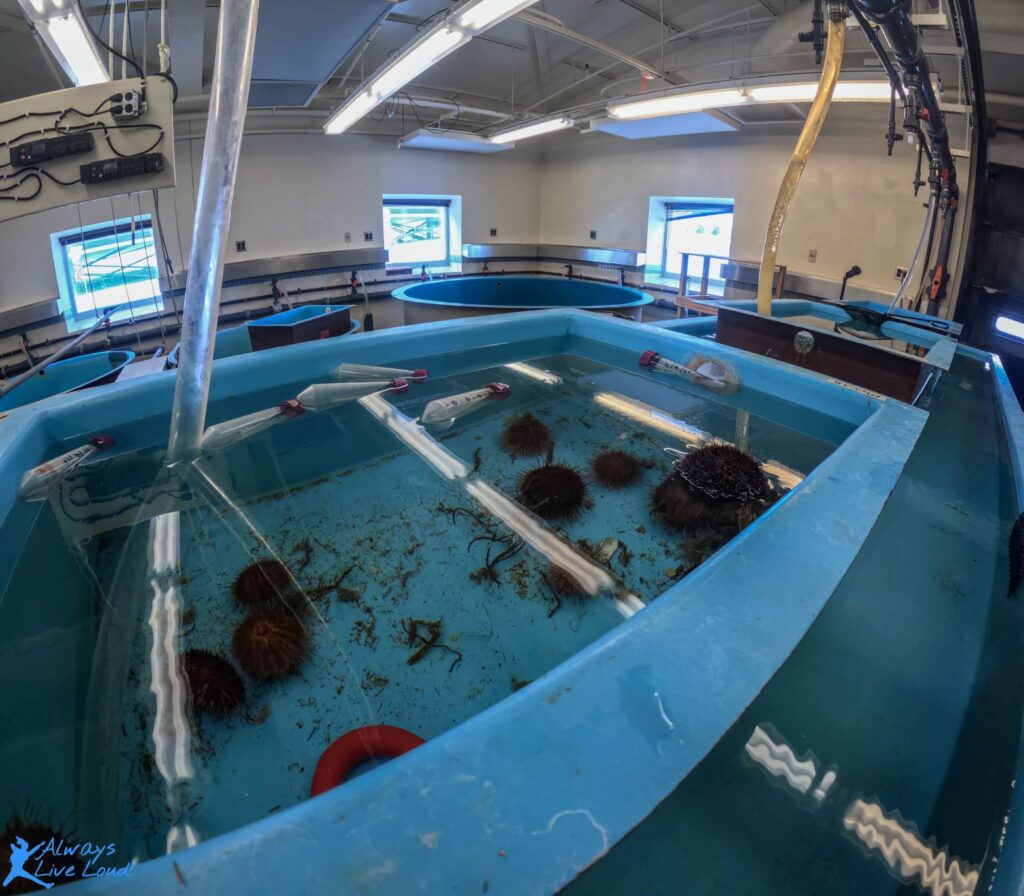During my recent visit to McMurdo Station in Antarctica, I had the opportunity to explore the Crary Science Building – Crary Science Labs. One of the highlights of my trip was the Sunday science tours, which welcomed anyone interested in fields such as glaciology, biology, geology, and meteorology and so on.
These tours provided valuable insights into critical research and fostered a deeper appreciation for the science behind Antarctica’s unique environment.
“I want to get out in the water. I want to see fish, real fish, not fish in a laboratory.”
– Sylvia Earle, Oceanographer
The Tour
Several tanks at the aquarium display Antarctica’s diverse undersea life. These curated exhibits provide valuable insights into animal behaviors, particularly how certain species interact with one another.
For example, I discovered that the red starfish is known to be aggressive and prey on sea urchins. This information emphasizes the importance of understanding ecological relationships and the dynamics of marine ecosystems.
The Star fish⭐

In this observation, you can examine three distinct species of starfish. The first, the Antarctic starfish, known scientifically as Odontaster validus, is easily recognizable due to its vibrant red color, which makes it visually striking and helps it blend into its deep-sea environment, where it resides.
The second and third species are both yellow sea stars. The larger of the two may belong to the species Diplasterias brucei, known for its robust body and broader arms that can extend significantly, allowing it to navigate through various tidal zones. On the other hand, the smaller yellow sea star might be Anasterias Antarctica, commonly referred to as the Cinderella starfish. This species is named for its delicate, almost fairytale-like appearance.
Despite these observations and potential identifications, my certainty regarding their exact identification is not absolute, as distinguishing between similar species can be quite challenging.
The Sea Spider🕷️

The giant Antarctic sea spider, scientifically known as Colossendeis megalonyx, is a fascinating species that can reach impressive lengths of over 20 inches. Unlike many other marine creatures, this unique arachnid breathes through specialized structures in its legs, allowing it to extract oxygen from the water efficiently.
One common misconception is that these sea spiders are venomous; however, they pose no threat to humans, as they are not poisonous. Their remarkable adaptations and size make them one of the more intriguing inhabitants of the Antarctic marine ecosystem.
The others animals🐌

In this aquatic environment, you’ll encounter fascinating sea urchins, spiny, globular animals often found clinging to rocks on the ocean floor. You may also observe Glyptonotus antarcticus, a unique species that swims on its back, gracefully navigating the waters.
Additionally, keep an eye out for yellow sea lemons, which are vibrant, round undersea creatures that resemble the shape and color of lemons, hence their name. These intriguing animals fall under the category of gastropod mollusks, commonly known as snails, and they display fascinating behaviors and adaptations in their natural habitat.
You will be able to see these fascinating undersea animals in the video below. I hope you enjoy!☺️

